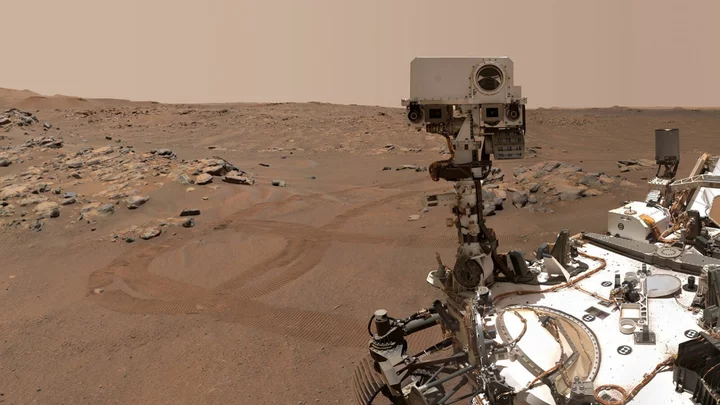Mars once gushed with water.
The Red Planet, long ago callously stripped of its insulating atmosphere, is today 1,000 times drier than the driest desert on Earth. But deep, roaring rivers used to flow through parts of the ancient Martian landscape. Earlier this year, NASA's car-sized Perseverance rover found evidence of a "rollicking" and "high-energy river." The waterway, evaporated billions of years ago, left evidence of the pebble-rich debris it once transported.
Now, the space agency's rover, exploring Mars' Jezero Crater, has spotted evidence of perhaps vastly more water. As the image below shows, Perseverance snapped images of an expansive boulder field. These large rocks were almost certainly moved by water, similar to how such rocks are moved on Earth.
"These boulders were transported by water that was either deeper or flowed faster than the ancient waterway that deposited the smaller pebbles that also populate the area," NASA wrote.
SEE ALSO: NASA helicopter captures glorious view of Mars, with some surprises A boulder field spotted by NASA's Perseverance rover in the planet's Jezero Crater. Credit: NASA / JPL-Caltech / ASU / MSSSIn the image above, you can spy the rover's tracks as it traversed the boulder field. For reference, its six wheels are each 20 inches across; so these are some sizable, heavy rocks.
NASA's planetary researchers are assessing what these past rivers were like. They know the waterways were robust, and at times curved. "Scientists are now debating what kind of powerfully flowing water formed those curves: a river like the Mississippi, which winds snakelike across the landscape, or a braided river like Nebraska’s Platte, which forms small islands of sediment called sandbars," NASA previously explained.
Overall, it's clear Mars was once an extremely watery place. There are also dried-up lakes, dried streams, and even evidence of ancient waves.
The question that looms large is if any primitive life ever evolved in Mars' waterways and moist environments (or if Martian life dwelled underground).
One of Perseverance's primary objectives is to "search for signs of ancient microbial life," NASA said. "The rover will characterize the planet's geology and past climate, pave the way for human exploration of the Red Planet, and be the first mission to collect and cache Martian rock and regolith (broken rock and dust)."
Want more science and tech news delivered straight to your inbox? Sign up for Mashable's Light Speed newsletter today.
So far, although organic materials — like the carbon found in our bodies — have been found in Martian rock samples, there's no evidence of past cell structures or specific molecules that are telltale signs of life. The extraterrestrial search ahead will be long.
"The burden of proof for establishing life on another planet is very, very high," Perseverance project manager Ken Farley said at a press conference last year.









